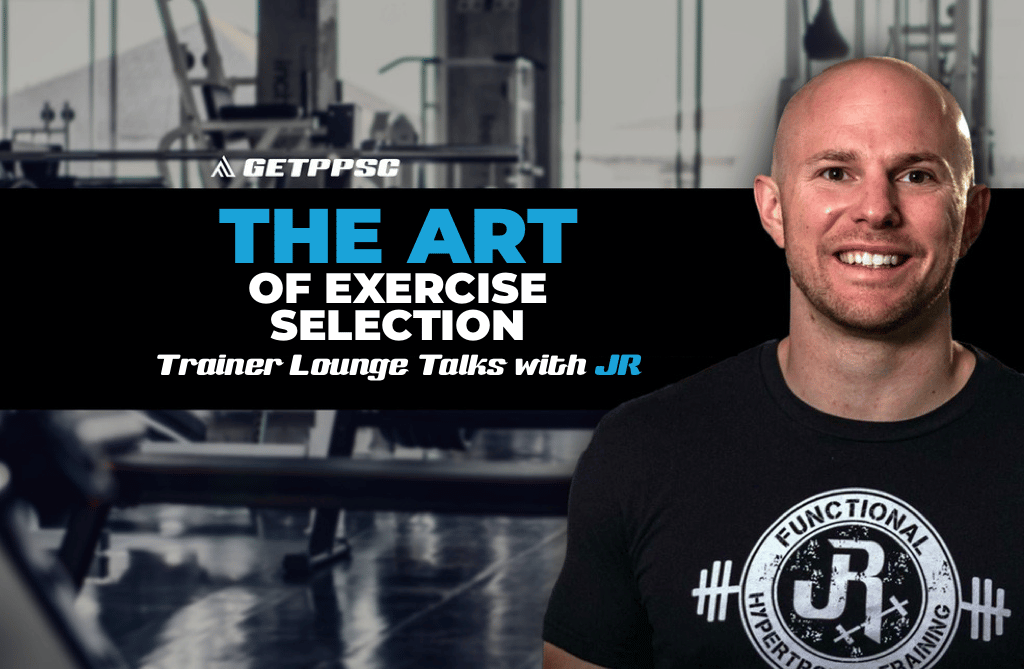Once you “UNLOCK” the top of each movement pattern pyramid, should you ALWAYS train at the top forever in order to elicit a strong pain-free training effect?
This is a question that we commonly get at the PPSC, even from experienced coaches. And many times, the question stems from the idea that ONLY the big barbell lifts can get your bigger, stronger or optimize performance.
That could NOT be further from the truth. Actually, it’s quite the opposite as intermediate clients and athletes move into more advanced stages of their skill, strength and performance training.
While not everyone will make it to the top of the pyramids (nor do they need to in order to make notable improvements in any physical characteristic, attribute or goal set) those who do are usually the client that we can start having a bit more freedom with in terms of programming and exercise selection.
The Building Blocks
With a client that starts at the bottom of the pyramid, it’s important to make strategic progressions according to motor skill acquisition and strength enhancement. BUT, as clients climb, remember that they are not only training the highest rung on the ladder, but also maintaining everything under it.
Simply put, the more advanced a client becomes, the MORE alternative and options they have for exercise selection, and cycling their programming in a more undulating periodized plan.
But what’s crazy about advanced clients (which make up between 5-10% of your total client load for the average coach or trainer) is that the TOP of the pyramid is rarely the “hardest” work in a training day or programming cycle.
As an advanced client earns their right to become “advanced” each and every step progression on the pyramid ALSO gets harder, not easier. Because, yes, they are indeed stronger and able to push those more basic progressions HARDER.
Adjusting the Variables
Take an advanced client squatting with a barbell on their back. Sure, that’s a great exercise for them to train power or strength capacities with, but what about brutalizing the training effect on the squat pattern with the goal of eliciting metabolic stress?
Something as “basic” as the goblet squat turns into a blood bath. Say over the last 2.5 years of training with you, that specific client went from 13 reps with bodyweight in their hands, to 20 reps, to 25 reps and proceeded to train barbell progressions.
All of a sudden they are doing MORE total work with the same load than they were before. It’s called getting stronger. And by the time they make it to barbell back squatting? They are going to be bigger, stronger and more skilled than ever before.
That’s why when cycling back in lower rung basics like goblet squatting and STILL training it as hard and heavy as possible, these advanced clients will actually get hit FAR harder than a beginner or intermediate client in terms of stimuli.
That client that used to do 13 reps at bodyweight for the goblet squat challenge is now doing 31, peaking their heart rate to 203 and having jelly legs for 15 minutes after. Same exercise, different levels of skill and strength, and FAR different training stimuli.
The Art
The stronger and more skilled you are, the more the basic core foundational exercises (inverted rows, goblet squats, RDL’s, push ups, pull ups, split squats, loaded carries) will CRUSH you. NOT the other way around.
Let me repeat, as this is a HUGE misconception in our industry today. The MORE strong and skilled you are, the MORE of a stimuli you will receive by training the foundational basics.
So back to the original question, should advanced clients be training only the top of the movement pattern progression pyramids?! Fuck no! They should be training it all.
Without making this an entire dissertation, here’s how I like to cycle the big key performance indicator lifts for the squat, hinge, push and pull:
Squat
1) Barbell Box Squat
2) Barbell Front Squat
3) Barbell Back Squat
4) Dumbbell Goblet Squat
Hinge
1) Conventional Barbell Deadlift
2) Trap Bar Deadlift
3) Hybrid Stance Sumo Deadlift
4) Heavy RDL
Push
1) Angled Barbell Bench Press
2) Barbell Bench Press
3) Neutral Grip Bar Bench Press
4) Heavy Push Up
Pull
1) Chin Up
2) Pull Up
3) Neutral Grip Chin Up
4) Heavy Slight Vertical Pulldown
Now you may be thinking, that’s a LOT of upper pyramid work for the KPI’s, and you’d be right…
Where I tend to program the mid to bottom portions of the movement pattern pyramids for advanced clients is inside of the secondary strength and hypertrophy blocks of a training day, OR incorporated into recovery/conditioning energy systems work.
A lot of benefits to hitting more “functional” basics for building muscle and strategically torturing yourself or your clients with seemingly “easy” exercises from the bottom.
It’s kind of a mind fuck, something SO simple being SO sinister when trained at the right time, at the right load with the right client and the right portion of a program. And THAT is what makes it fun, at least for sadists like me 😉
Hope this helps clear up this common question all!
Here’s to the climb,




